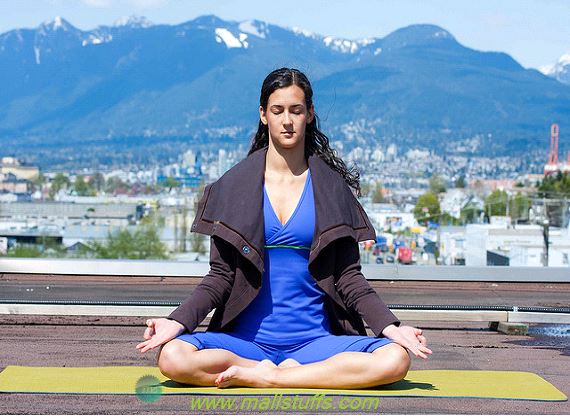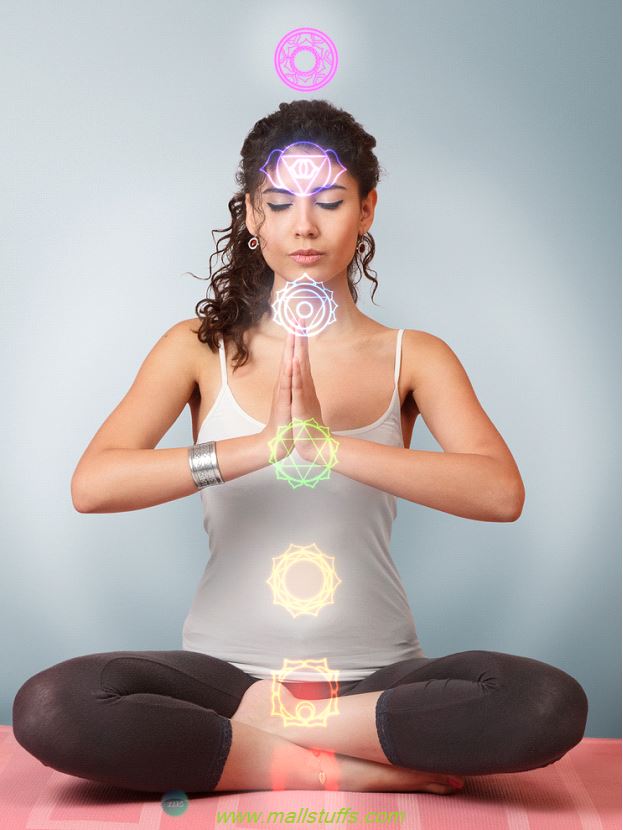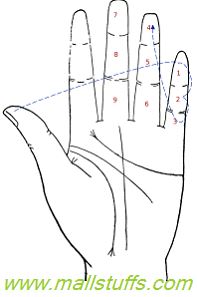
How to chant AUM and mantras
Over the last few months, I have been continuously posting on the significance of AUM/Mantras and chanting AUM/mantras. However, I missed out the crucial part on how to chant AUM/Mantras. All the preceding articles are of no use unless you read this article where I have detailed out the steps on how to practice meditation and chant mantras. This is very important as chanting mantras yields no effect unless it is perfectly tuned and done correctly.
Why chanting is precisely tuned?
Vedic sages composed several hymns for specific purposes and recommended chanting of hymns in a specific tone, pitch and rhythm. Special emphasis was given on correct pronunciation and frequency of the note. If you observe the Vedic sage (genuine ones) carefully, you will notice their sharp focus on correct pronunciation and rhythmic melody tone of chants. This was because they experienced the effect of mantras only when the chanting process produced certain sound frequencies.
Yoga scholar Georg Feuerstein said, ‘Each holy word had to be perfectly pronounced lest it should adversely influence the outcome of the sacred ritual.’
Ways of chanting
To generate the desired sound vibration through chanting of mantras, Vedic sages described various ways of chanting. They are
Padapatha: Dividing single sentence into individual words (Pada).
Kramapatha: Pairs (Krama) at a time.
Jatapatha: Words combined (Jata) together and recited multiple times.
Ghanapatha: Group of words repeated back and forth like the ringing bell (Ghana)
There are other modes of chanting that involves reversal of the words or sentences. Unlike English language, backward chanting does not change the meaning of sentences written in Sanskrit language. This is perhaps the reason why sanskrit is known as divine language.
How to Chant AUM
Don’t chant AUM for namesake. Do it only when you aim to realize your inner spirit.

Aum can be chanted loudly or whispered in the mouth or repeated internally. One of the ways to chant AUM is to chant AUUUU for 5 seconds and MMMM for 5 seconds. A should be pronounced for 2 seconds with open lips, U for 3 seconds with partially closed lips and M for 5 seconds with completely closed lips. After one chant, give 5 second to inhale oxygen. Thus AUM should be chanted once every 15 seconds. Hence, one can complete 108 repetitions of Aum in approximately 27 minutes.
<>
In yajur Veda, Chanting of AUM is prescribed in three simple steps:
1) AUM Pratistha
2) AUM Krato Smara
3) AUM Kham Brahman.
Prathista means ‘establish’ or ‘install’. First step is to instill AUM (God) in your heart.
Krato means Yajna (Sacrifice). Second step is to perform sacrifice dedicated to god. ‘AUM Krato Smara’ means “doing sacrifice by Chanting AUM”.
AUM Kham Brahma Means “AUM is the transcendtal Brahman (God)”. Third step is to reach the transcendental Brahman by chanting AUM.
AUM is referred as Udgeetha in Chandogya Upanishad, meaning Ud (superbly) + geeth (worth singing).
<>
How to chant mantra
1) First find a calm place to sit in a comfortable position. A good position would be to sit cross legged on the ground with back straight during the entire meditation process.

2) Best would be to sit in a cross legged position(also known as lotus position) on a soft cushion bed-sheet or mat with face facing the sun (Shown above). Such a perfect alignment helps in the correct propagation of sound waves in the atmosphere.
<>
3) Wear loose comfortable clothes to avoid itching of the body. Make sure your cloth is not tight at any part of the body.
4) Spine should be upright. Head, neck and spinal cord should be perfectly vertically aligned.
5) Keep your mouth closed and let the nose do all the natural breathing. Close your mouth but relax your jaw muscles to avoid the upper and lower teeth touch each other.
6) Place one hand on top of other or place both hands on your knees such that the index finger meets the thumbs gently and the palms are directed towards the sky. Let the other three fingers remain stretched. Keep your back straighten, neck erect and head straight like a soldier standing in attention mode.
7) Focus your eyes straight at a distant point or at the center of your forehead. Focusing at center of forehead is recommended as it is the highest point of consciousness in the body. This position known as shambhavi mudra is intended to stimulate the sixth (ajna) chakra of our body.

8) Then close your eyes to avoid any visual distractions. Closing eyes will clam the mind by reducing the brain-wave activity up to 70%.
9) Once you have placed yourself in such a position, Keep inhaling the air inwards slowly saying AUUUUUUUUUUUUUUUUU and then exhaling the air outwards saying UMMMMMMMMMMM. Begin intoning (“singing” on a single note) Om once throughout each inhalation and once throughout each exhalation. Over the period of time, your intonation would turn softer, sweeter and inaudible but the effect would be much more than before as you have turned all your attention to meditation. Also your number of breath per minute would reduce significantly.
<>
10) Breathing should be loose, mild and moderate. Avoid soft or tough breathing as exerting control on your breath not only divert your concentration but also causes loss of energy which directly affects long and continuous meditation.
11) Reducing the number of breaths per second gradually expands your consciousness and increases the longevity of your life. As you may be knowing, human natural death is due to weak heart and lack of oxygen in the blood. So, such a humming process increases the oxygen intake in your body more than twenty times thus increasing longevity.
12) Realize the internal vibrations of chanting in each part of the body. Vibration would start in the naval areas towards the base of the throat. As the vibrations become stronger, prolong your breathing time by taking deep breaths.

13) Start meditating for 10-15 minutes initially and gradually, prolong your meditative time as your daily schedule permits. After continuous meditation for few days, slowly and gradually, you would feel the vibrations reaching the crown of the head (Sahasrara Chakra).
<>
To sum it up, meditation primarily consists of three basic steps.
Sit in a cross legged position and close your eyes
Inhale and exhale air in the ratio 2:1
Chanting AUM in a relaxed manner totally in sync with the breathing activity
Points to consider while chanting (Do’s and don’t)
1) Meditation may not be perfect in the first attempt. You may face difficulty in breathing or would get distracted to thoughts. In such cases, relax for some time and then try again to concentrate at the center.
2) Initially, you may face difficulty in chanting the mantra as the words are in Sanskrit-an ancient language which is hardly used in education and conversation. With continuous practice and devotion, one would perfect the art of chanting mantra similar to singing a song accurately after listening to it many times.
<>
3) Some sensations and thoughts may arise during meditation. Ignore all such feelings/disturbances and concentrate only on your meditation. Best remedy to divert your attention from such thoughts is to take a long breath and chant AUM loudly.
4) At any point of time, if you feel and dizzy or troubled, open your eyes slowly and drink a glass of water. Then, either call off for the day or resume chanting again after sometime.

5) While chanting, don’t let your mind divert to hundreds of issues you are facing in your social life. Keep yourself focused on meditation and achievements of your goals.
6) Ignore all the thoughts, memories, feelings, impressions and other sensations that may arise during the initial stages of meditation. Do not divert your mind to internal or external changes in environment and let the intonation bring all the peace, joy and happiness your subtle and physical body is looking for.
<>
7) At any time of meditation, if you feel distracted or anxious, just take a deep sound breath to release all your tensions and start over once again.
8) Stick to only one mantra for chanting. Sun rise and sun set is the perfect time to start meditation. Meditation is not advised without bathing. If unable to bath for any reasons, at least wash your hands, feet’s, mouth and face before starting to meditate.
9) Meditate in a temple complex, river-bank, lake or under a sacred peepal or banyan tree. Don’t sit on ground directly. Cover the ground with a piece of soft cloth to avoid the outflow of static electricity from your body. Perform your daily meditation at the same place, same time and same way.
10) Don’t beg god for worldly pleasures, instead purify the mind by the vibratory power of chanting mantras.
11) 70% of the exhalation time should be in chanting “AUUUUUU” and remaining 30% in chanting “UUUUUUUM”...Keep chanting MMM as long as you are breathing out. Such an inhalation and exhalation process would vibrate the bones near the nasal and neck area. Vibration in the nasal area triggers the magical waves throughout the body. This would result in detoxification and recharging of all cells and tissues in the body. One can feel the light glowing in his body.
12) At the end of the meditation, relax and concentrate on normal breathing for few minutes. Don’t concentrate on anything else except the intonation of AUM. Your mind may divert to some particular point of the body like the third eye but you keep yourself focused on chanting AUM.
13) Mantras should be chanted in multiples of 9. Chanting mantras 108 times is recommended using rudaksha beads. If one chants daily mantras 108 times for few weeks, he would not need rudraksha beads to count number of chants.
<>
14) One often chants in a hurry to complete 108 repetitions of the mantra. Such a way of meditation is of no use and yields no benefits.
15) Covering of head with some soft cloth is recommended as it is believed that energy from the human body is released from the head. Covering head helps in retaining the energy which is very crucial if you chant for long hours.
16) IF you are a businessman or a professional who do not have ample time for meditation, use a 108 rosary bead to chant the AUM word 108 times in approximately 15 minutes.
<>
17) A chanting mind should be very calm, open, devoted, faithful and ever-ready to offer devotional service. Only when the mind is filled with beneficial positive energies, it helps in the achievement of the spiritual and social goals.
18) Start and stop your daily meditation after humming the salutations to your revered deity. Don’t leave the place immediately after meditation. Wait for some time before you start off with your daily routine work and duties. 
How to count repetitions of mantras
If you chant mantra 108 times, then use rudraksha or Buddhist rosary beads to count number of repetitions. Hold the beads loosely such that you can rotate the rosary using your index finger. Move one bead each time you finish chanting AUM.
Using the segments of fingers is another way to count the number of repetitions while chanting. Start with the tip of the thumb touching the tip of the smallest finger. Move the thumb downwards after each chant. After reaching the end, move the thumb to the tip of the finger at the immediate left. Move thumb downward till you reach the end of this finger and repeat this same process with the remaining two fingers. By the time you finishes all fingers, you would have completed chanting mantra 12 times.
Now follow the same process with your right hand. One cycle of right and left hand combination would result in 24 repetitions of mantra. Four times counting of right hand and five times counting of left hand would result in 108 repetitions of mantra. Hence, you should stop chanting mantra after 4 cycles of right hand and five cycles of left hand.
<>

Chanting AUM for long hours not advised
Chanting only AUM can have adverse effect if the person is inexperienced and is not situated at the spiritual level to tolerate the spiritual effects of AUM. Since the exhalation process relaxes the muscles, AUM sound may not be emitted perfectly if the body relaxation is not under control. Tension in the muscles of throat may unease the relaxation of all the muscles used in relaxation process. Newbies are advised to chant Aum prefixed to the name of deity. Ex: Aum Namaha Shivaya or Aum Ganeshaye Namah. This is because chanting only AUM produces lot of subtle heat inside the body. This excessive heat do not affect males as their sexual organ is outside the body but the subtle heat in the woman body can affect the reproductive organs of the woman as they lie inside the abdominal cavity. Women may feel abnormal menstrual cycle, dysmenorrhoea, infertility etc.
Chanting of AUM for long hours is advised only for experienced yogic practitioners.
<>
Conclusion:
Mantra is the spiritual food of devotee. Feel the presence of god in the deepest chambers of your heart by correctly following the chanting process. Thus, in this article, we learnt various ways of chanting AUM, how to chant AUM and dos and don’ts of chanting AUM. Hope this article guides you in your meditation process and helps you in achieving great heights in spiritual efficacies.
Note: Images used on this website
are either a production of Bhaktivedanta Book Trust(https://www.krishna.com), Iskcon
Foundation or were found in google search under "Free to use and share". If any
of the images presented here violates copyright issues or infringes anyone copyright
or are not under "Fair use", then please bring it to our notice. Read
Disclaimer for more.
Share this to your friends. One of your friend is
waiting for your share.
Related Articles
Deva Shree Ganesha-Agneepath english poetic translation with hindi subtitles
ekdanta vakratundaya english poetic translation with hindi subtitles
kalaripayattu- World oldest martial art from india
Why Lord Krishna didnt marry radha
How to chant AUM and mantras
Effects of chanting AUM or mantras
Science in Hinduism - Speed of light
How to deal with rising menace of self-styled god-mens and gurus
Why Lord krishna had more than 16000 wives
How chanting AUM or mantras heals diseases
Post Comment